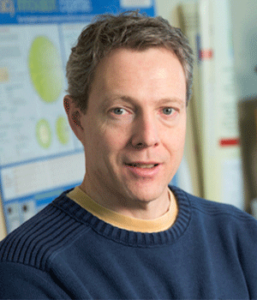
For the first time, the University of Wisconsin-Milwaukee has received research funding from NATO’s Science for Peace and Security Programme (SPS).
George Hanson, professor, electrical engineering, at UWM’s College of Engineering & Applied Science will be the principal investigator of a $404,000 international collaborative research project. The goal is to expand and enhance radar’s and lidar’s capabilities through the quantum (atomic level) properties of light, creating the capability of mapping objects too small to be picked up by traditional radar. “This could allow the detection of very small objects, and the detection of objects in very noisy and complicated environments,” Hanson says.
“The College of Engineering and Applied Science is honored and excited to receive a research grant of this type from NATO,” said Andrew Graettinger, the college’s associate dean for research. “This is a great opportunity for us to advance science and diplomacy with our partnering universities in NATO countries.”
SPS promotes cooperation between NATO member states and partner nations on scientific endeavors and funds security-relevant activities that respond to NATO’s strategic objectives.
The three-year project–Constructing Novel Non-Classical States of Electromagnetic Field for Far-Field Sensing, RADAR and LIDAR applications – starts Aug. 15 and is funded by SPS’s Emerging Security Challenges Division. Research funded by this division must have a clear link to security and address counter terrorism, energy security, cyber defense, environmental security, or defense against chemical, biological, radiological and nuclear materials or weapons.
In addition to UWM, collaborators on the project are from three institutes in NATO-member countries: Tel Aviv University, Israel; University of Exeter, UK; and the Institute of Physics, Belarus.
UWM tackling main challenge to quantum radar
The basic principle of radar, Hanson explains, is to send trillions of photons with relatively long wavelengths (a few centimeters); this electromagnetic signal hits an object and returns to the radar’s antenna. From this, the target’s size, speed and distance from the radar can be measured.
Quantum radar would use just a few photons that have quantum properties not observable when many photons are involved. This may allow one to pinpoint small objects and filter unwanted electromagnetic noise from other objects that the antenna picked up.
UWM will tackle the existing main challenge to this technology: generating the correct quantum state of light to be used. “We have considerable experience working with the targeted wavelengths,” Hanson says. “Generating the required quantum states will be new to us, and very exciting.”
Potential applications of research results, he says, include military and civilian radar, and lidars.
Two UWM engineering doctoral students will work with Hanson on this project.
In another project, Hanson is one of two UWM researchers collaborating in search of breakthroughs for using light to transmit data, which has vast implications for the speed, bandwidth and efficiency technology.